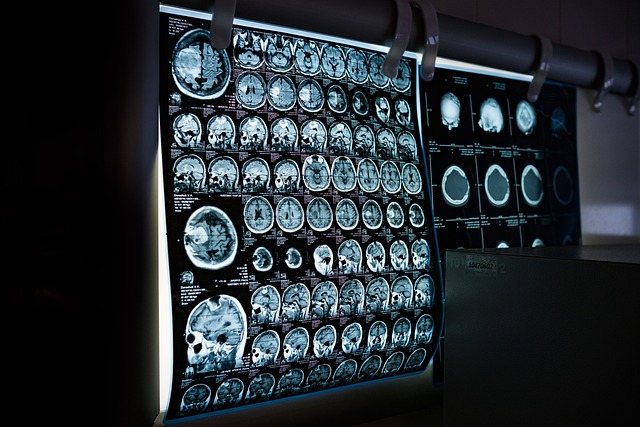Understanding Triple Negative Breast Cancer Characteristics
Triple negative breast cancer represents a distinct subtype that accounts for approximately 10-15% of all breast cancer diagnoses. This form differs significantly from other breast cancers due to its unique cellular characteristics and the absence of three common receptors that typically guide treatment decisions. Understanding these differences is essential for patients, caregivers, and anyone seeking comprehensive knowledge about breast cancer variations and their implications for diagnosis and management approaches.

Triple negative breast cancer stands out among breast cancer subtypes due to specific biological features that influence both its behavior and treatment pathways. Unlike other forms, this type tests negative for estrogen receptors, progesterone receptors, and human epidermal growth factor receptor 2 (HER2). These absences fundamentally alter how medical professionals approach diagnosis, monitoring, and therapeutic strategies, making it crucial to understand what makes this subtype unique.
Why Is Triple Negative Breast Cancer Different from Others?
The defining characteristic lies in what this cancer lacks rather than what it possesses. Standard breast cancers often express one or more of three key receptors: estrogen, progesterone, or HER2. These receptors act as targets for hormone therapies and targeted treatments that have proven highly effective. Triple negative breast cancer cells do not have any of these receptors, which eliminates entire categories of treatment options that work well for other breast cancer types.
This absence creates both challenges and necessitates different approaches. Without hormone receptors, therapies like tamoxifen or aromatase inhibitors that block estrogen effects become ineffective. Similarly, HER2-targeted drugs such as trastuzumab cannot work without the HER2 protein present. Medical teams must therefore rely on different treatment modalities, primarily chemotherapy, along with emerging immunotherapy options and clinical trial opportunities.
The cancer also tends to be more aggressive, growing and spreading faster than hormone receptor-positive types. It more commonly affects younger women, particularly those under 40, and shows higher prevalence rates among women of African and Hispanic descent. These demographic patterns add another layer of distinction that researchers continue to study for underlying genetic and biological explanations.
What Sets Triple Negative Breast Cancer Apart?
Beyond receptor status, several clinical features distinguish this subtype. Triple negative tumors typically present as higher grade cancers, meaning the cells appear more abnormal under microscopic examination and tend to divide more rapidly. This aggressive nature often results in larger tumor sizes at diagnosis and increased likelihood of lymph node involvement when first detected.
The cancer shows distinct patterns in how it spreads. While other breast cancers commonly metastasize to bones first, triple negative breast cancer more frequently spreads to visceral organs like the lungs, liver, and brain. This metastatic pattern requires different surveillance strategies and influences long-term monitoring protocols after initial treatment.
Genetic factors also play a more prominent role. Women with BRCA1 gene mutations face substantially higher risks of developing triple negative breast cancer compared to other subtypes. This connection has led to increased emphasis on genetic testing and counseling for patients diagnosed with this form, as results can influence treatment decisions and preventive strategies for family members.
The cancer responds differently to chemotherapy timing as well. Neoadjuvant chemotherapy, administered before surgery, often achieves better results with triple negative cases than with other types. When complete pathologic response occurs, meaning no cancer cells remain after chemotherapy, long-term outcomes improve significantly. This response pattern has shifted treatment sequencing preferences in many cases.
How Does Triple Negative Breast Cancer Differ from Other Types?
Treatment approaches represent perhaps the most significant practical difference. While hormone receptor-positive breast cancers benefit from years of endocrine therapy following initial treatment, triple negative patients typically complete active treatment within months. This shorter treatment duration comes with trade-offs: the initial chemotherapy regimens tend to be more intensive, but patients avoid the prolonged medication schedules common with hormone-positive cases.
Recurrence patterns follow different timelines. Triple negative breast cancer carries higher recurrence risk in the first three to five years after diagnosis, with risk decreasing substantially after this window. Hormone receptor-positive cancers, conversely, maintain steady recurrence risk over longer periods, sometimes extending beyond ten years. This difference affects surveillance schedules and the psychological experience of survivorship.
Emerging treatment options are changing the landscape. Immunotherapy drugs that help the immune system recognize and attack cancer cells have shown promise specifically for triple negative cases, particularly when combined with chemotherapy. PARP inhibitors, medications that interfere with cancer cell DNA repair, offer new options for patients with BRCA mutations. These advances represent significant progress, though they remain unavailable or unsuitable for all patients.
Research intensity has increased dramatically in recent years. Scientists have identified multiple subtypes within triple negative breast cancer itself, each with distinct molecular characteristics. This growing understanding promises more personalized approaches as researchers work to match specific treatments to particular tumor profiles. Clinical trials continue exploring novel therapies, targeted agents, and combination strategies designed specifically for triple negative cases.
Prognosis considerations differ as well. While overall survival rates have improved significantly with modern treatments, triple negative breast cancer generally carries somewhat lower survival statistics compared to hormone receptor-positive types. However, patients who achieve complete response to initial treatment often have excellent long-term outcomes. Stage at diagnosis, tumor size, lymph node involvement, and response to chemotherapy all heavily influence individual prognosis, making generalizations less useful than detailed discussions with oncology teams familiar with specific case details.
Support needs may vary for patients facing this diagnosis. The aggressive nature, intensive initial treatment, and concentrated recurrence risk period create distinct emotional and practical challenges. Many patients benefit from connecting with others who have faced similar diagnoses, whether through local support groups or online communities focused specifically on triple negative breast cancer experiences.
Conclusion
Triple negative breast cancer differs from other breast cancer types through its lack of hormone and HER2 receptors, more aggressive behavior, distinct metastatic patterns, and unique treatment requirements. While these differences present challenges, ongoing research continues expanding treatment options and improving outcomes. Understanding these characteristics empowers patients and families to engage meaningfully with their healthcare teams, make informed decisions, and access appropriate resources throughout their cancer journey.
This article is for informational purposes only and should not be considered medical advice. Please consult a qualified healthcare professional for personalized guidance and treatment.




